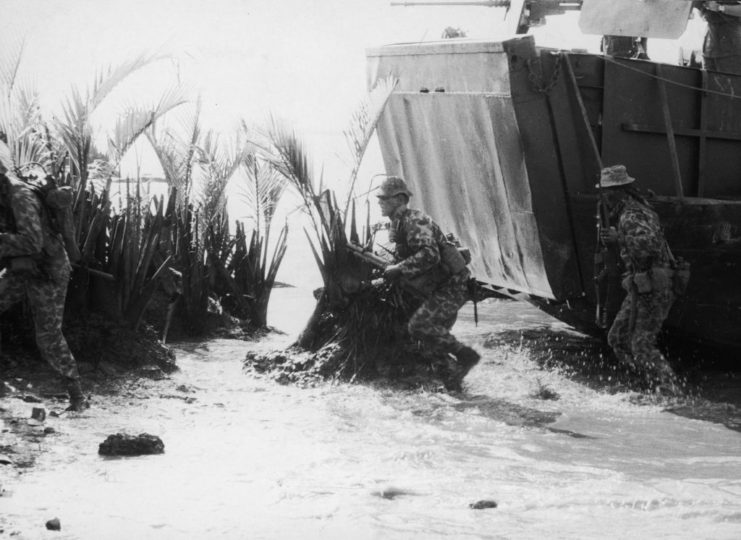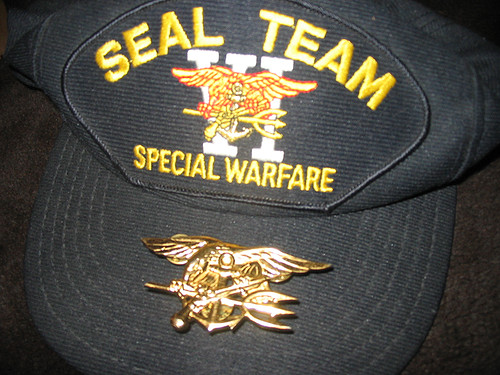Richard Marcinko was born and raised in Lansford, Pennsylvania, to immigrant parents from Croatia and Slovakia. His early years were largely uneventful, but by the age of 17, he recognized that traditional education wasn’t the right path for him and chose to leave high school. While his first attempt to join the US Marine Corps was unsuccessful due to his lack of a diploma, Marcinko’s determination never wavered.
In 1958, he accomplished his goal by enlisting in the Navy, beginning a career that would be both notable and occasionally marked by controversy.
Richard Marcinko’s early service in the US Navy

Richard Marcinko began his naval career as a radioman but soon felt drawn to a different path. Inspired by the 1951 film The Frogmen, which depicted the Underwater Demolition Team (UDT) during World War II, he realized he wanted to follow a similar trajectory.
Eventually, he was accepted into Underwater Demolition Team/Replacement (UDTR) training, where he developed his expertise in diving, parachuting, and handling explosives.
In 1965, Marcinko was selected for officer training and graduated from Officer Candidate School in December. After being commissioned as an ensign, he joined SEAL Team Two in June 1966, just in time for deployment to Vietnam.
He was sent overseas in 1967.
Richard Marcinko’s service during the Vietnam War

During his second tour, Marcinko led his platoon through the Tet Offensive, assisting US Army Special Forces in rescuing trapped American nurses and a schoolteacher. His leadership was so effective that the North Vietnamese Army (NVA) placed a 50,000 piastre bounty on his head, promising payment to anyone who could kill him and provide proof.
Marcinko received numerous awards for his service across both tours: the Silver Star, four Bronze Stars with combat V, two Navy Commendation Medals, the Legion of Merit, and the Vietnamese Cross of Gallantry with Silver Star. However, despite his impressive service in Vietnam, this period was not what he would become best known for in his military career.
US Navy SEAL Team Six

In 1973, following a brief stint as the naval attaché to Cambodia, Richard Marcinko took command of SEAL Team Two, a position he held from 1974 to 1976. By 1979, with the United States facing the Iran Hostage Crisis, the Navy established a specialized counter-terrorism unit.
Marcinko was selected to form SEAL Team Six, which he led from 1980 to 1983. He handpicked members from the UDT and SEAL communities, including some who had previously served with him in SEAL Team Two. This led to criticism, with detractors claiming he favored friends and “drinking buddies” over more qualified candidates.
Despite what the name might suggest, SEAL Team Six did not imply the existence of five other teams; Marcinko intentionally chose the name to mislead potential enemies during the Cold War, thereby enhancing operational security. The creation of the unit was kept highly classified due to its sensitive role in the midst of global geopolitical tensions.
Running Red Cell

Eventually, Richard Marcinko stepped down from his role as commander of SEAL Team Six and was given a new assignment to create an entirely different unit. This new team, called Red Cell, was tasked with evaluating the Navy’s susceptibility to terrorism. Red Cell was distinctive in that its members were not only allowed but encouraged to mimic terrorist attacks on naval bases.
The team used fake IDs, conducted break-ins, took hostages, and set up barricades to reveal the vulnerabilities of U.S. naval installations. Red Cell even went so far as to kidnap high-ranking officials, recording the entire operation to later present to base personnel. As described by Marcinko, “I’d tell them Red Cell was coming, eat them alive, and then show the film and rub their noses in it.”
A prison sentence and civilian life

Part of the controversy surrounding Richard Marcinko’s legacy comes from his alleged involvement in a “kick-back” scheme involving the price of hand grenades. According to prosecutors at his trial, he conspired with an arms dealer in Arizona to overcharge the government by nearly $113,000 on a contract to produce grenades.
Marcinko was convicted of conspiracy to defraud the government and was fined $10,000. He was sentenced to federal prison for 21 months, serving only 15 months of his term. He maintained his innocence until his death, claiming he was the subject of a “witch-hunt” because of his work with Red Cell.
After retiring from the Navy and serving his time in prison, Marcinko went on to have a successful civilian career, which was largely focused on the work he did while in the military. He wrote an autobiography, titled Rogue Warrior, as well as fictional books. He also hosted a radio show, America on Watch with Dick Marcinko.
On December 25, 2021, Marcinko died from a heart attack at his home in Fauquier County, Virginia. He was 81 years old.
The controversial legacy of Richard Marcinko

As a figure, Richard Marcinko remains highly controversial. He’s often commended for his military actions, particularly with his involvement with SEAL Team Six, which went on to be heavily involved in the war on terror. There’s no doubt his actions played an important role in the group’s counter-terrorism efforts throughout the Cold War and into the present.
However, there are others who feel many of his methods were appalling. He was known for his general disregard of the rules, and had a leadership style that brought him into conflict with superiors. His second-in-command of SEAL Team Six went so far as to say that Marcinko left “a mess” in his wake.
Want War History Online‘s content sent directly to your inbox? Sign up for our newsletter here!
He was, however, remembered more positively by Adm. William McRaven, who said of him:
“While we had some disagreements when I was a younger officer, I always respected his boldness, his ingenuity and his unrelenting drive for success. I hope he will be remembered for his numerous contributions to the SEAL community.”
